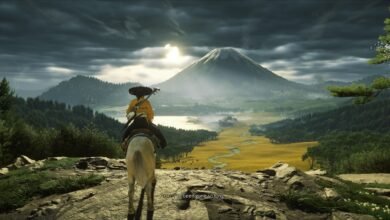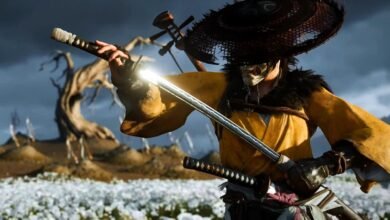Ghost of Yotei Earns Near-Perfect Score in Japan’s Top Gaming Magazine

eh▼ Summary
– The reviewer believes the game will be good but acknowledges they are not the target audience.
– They express frustration with the instrument playing mechanic, viewing it as unoriginal and annoying.
– The reviewer strongly dislikes the forced young cutscenes that use the SSD, calling it a waste of hardware.
– They criticize the game for prioritizing cutscenes over gameplay and not utilizing the map more creatively.
– The reviewer feels the implementation of features like segmented areas and teleporting is unimpressive and pathetic.
Ghost of Yotei has achieved a near-perfect score from Japan’s leading gaming publication, signaling a major critical success for the upcoming title. While the game appears to have strong foundational ideas and a clear artistic direction, some observers remain skeptical about certain design choices. The visual presentation, including a fair render distance, suggests a polished experience, though not every element resonates with all potential players.
One point of contention involves the implementation of instrument playing mechanics, which some feel closely resemble features seen in titles like Assassin’s Creed Shadows and The Last of Us 2. This similarity raises questions about originality in execution and timing, leaving certain viewers frustrated with what they perceive as a lack of fresh ideas from developers. Such comparisons can influence purchasing decisions, particularly among gamers who value innovation.
The use of SSD technology to facilitate forced young character cutscenes has drawn particular criticism. Critics argue this approach represents a disappointing application of hardware capability, suggesting the technology could enable more dynamic situational gameplay rather than scripted sequences. The practice of segregating areas for pre-loading through these cutscenes feels like a missed opportunity for deeper mechanical integration.
This technique of transitioning between younger and older character perspectives isn’t entirely new to gaming. Previous generations of consoles managed similar narrative devices without relying on current hardware capabilities. Games from the PS3 era implemented memory sequences and timeline shifts through creative design rather than technical brute force. The concern isn’t with the concept of exploring different time periods but with the execution feeling unnecessarily constrained.
The gaming industry has seen numerous examples of map reuse with meaningful variation, such as the light and dark world mechanics in classic titles. Why then, critics wonder, does Ghost of Yotei limit its time-shifting concept primarily to cutscenes rather than creating substantial playable areas from the character’s youth? This approach makes the technological implementation feel more like a showcase than an integral gameplay component.
Other games have demonstrated more inventive uses of dimensional shifting and environment manipulation. Some titles create seamless transitions between alternate versions of locations, while others incorporate changing track layouts or randomized elements that maintain engagement across repetitions. Compared to these implementations, the method employed in Ghost of Yotei can feel disappointingly straightforward.
The fundamental issue for some observers isn’t that the game will be bad, early indications suggest otherwise, but that certain design decisions prioritize visual presentation over interactive depth. When hardware capabilities enable new possibilities, seeing them used primarily for cinematic sequences rather than transformative gameplay can feel like a wasted opportunity. The game will likely satisfy its target audience, but for those hoping to see technology push gameplay forward in more significant ways, the approach falls short of being truly impressive or genre-impacting.
(Source: Push Square)





